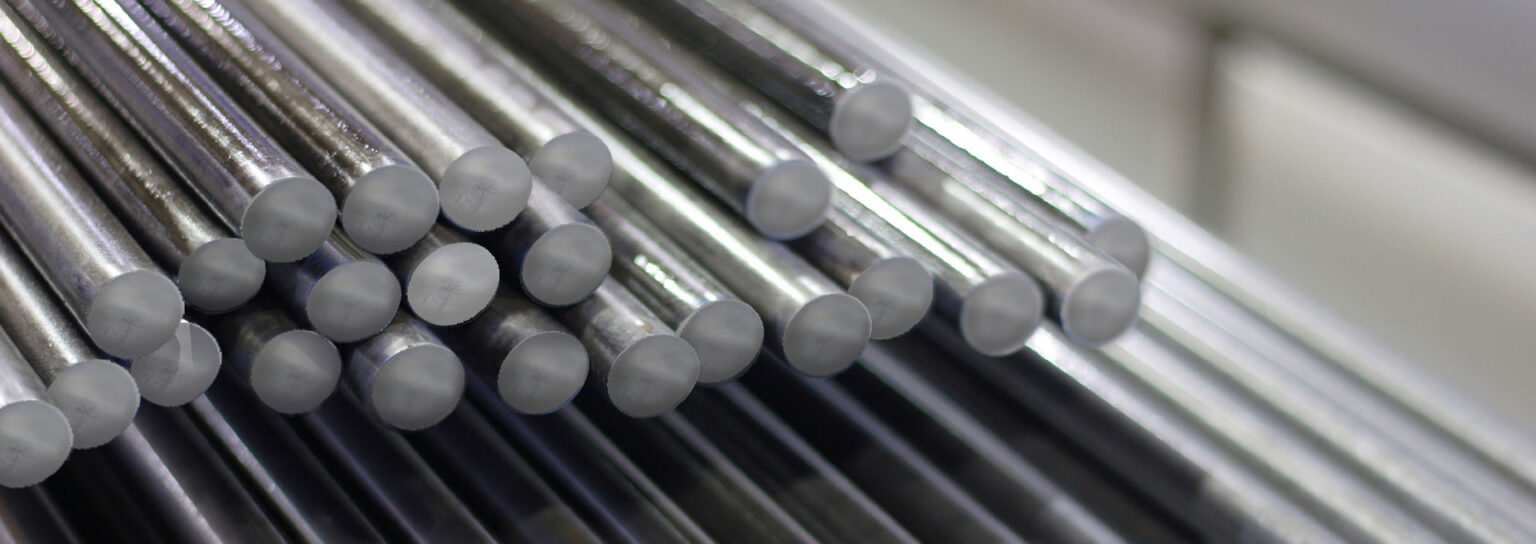Monel 400 Round Bars
Monel 400 round bars are commonly used in industries such as marine, chemical processing, and oil and gas, where their combination of corrosion resistance, mechanical strength, and adaptability to temperature variations is essential. Their versatility makes them a reliable choice for a wide range of applications.
Monel 400 Bars are made from an alloy of nickel-copper with exceptional mechanical properties. The content of the alloy varies depending on the application but typically is between 63% and 70% nickel, with the remainder being copper. It also contains small amounts of iron and manganese, contributing to its strength and durability. The corrosion resistance of Monel 400 Round Bars is superior to many other metals due to its composition.

he main benefit of Monel 400 Round Rods is their superior corrosion resistance. This makes them ideal for use in environments where other metals may not be suitable such as areas with high humidity levels or saltwater exposure.
They also have excellent strength at elevated temperatures, making them a great choice for components that can withstand extreme heat conditions, like those found in petrochemical plants or nuclear power plants. Additionally, these bars are easy to weld, which makes fabrication simpler than with other materials like steel or aluminum alloys. Several grades of Inconel round bars are available, like Inconel 625 Round Bars, Inconel 718 Round Bars, etc.
- Material Grade: Monel 400, a nickel-copper alloy with specific composition percentages of nickel, copper, and minor elements.
- Corrosion Resistance: Monel 400 round bars offer exceptional resistance to corrosion in various environments, including seawater, acids, and alkalis.
- Mechanical Properties: Specifications for tensile strength, yield strength, and elongation ensure the material’s mechanical reliability.
- Temperature Range: Monel 400 round bars maintain their properties across a wide range of temperatures, making them suitable for both low and elevated-temperature applications.
- Conductivity: Known for excellent thermal and electrical conductivity, making them valuable in heat exchangers and electrical applications.
- Standards: Compliance with industry standards, such as ASTM B164 for Monel round bars, ensures consistent quality and performance.
size range
- Diameter Range – 8mm – 250mm
- Length – Upto 6000mm
Material Certification and Traceability
At Satyam Overseas, we prioritize Material Certification and Traceability. Our materials, meeting ASTM and ASME standards, come with 3.1 Mill Test Certificates as a guarantee of compliance. Additionally, upon request, we provide 3.2 Mill Test Certificates for added assurance. Every material is clearly marked and accompanied by a corresponding certificate, meticulously linking markings to certification. This meticulous approach ensures complete accountability and unwavering reliability throughout our supply chain.
Chemical Composition
| Nickel | Carbon | Manganese | Iron | Sulfur | Silicon | Copper | |
|---|---|---|---|---|---|---|---|
| Min | 63.0 | – | – | – | – | – | – |
| Max | – | 0.3 | 2.0 | 2.5 | 0.024 | 0.5 | 28.0-34.0 |
Physical Composition
| Density, g/cm 3 | Density, lb/in 3 | Melting Range, °F | Melting Range, °C | Tension | Compression | Torsion | Poisson’s Ratio | Curie Temperature, °F | Curie Temperature, °C |
|---|---|---|---|---|---|---|---|---|---|
| 8.80 | 0.318 | 2370-2460 | 1300-1350 | 26.0 | 26.0 | 9.5 | 0.32 | 70-120 | 21-49 |
Designations & Standards
| Forms | ASTM | ASME | DIN |
|---|---|---|---|
| Rod Bar | B 164 B 564 | SB 164 SB 564 | 17752 17753 17754 |
Differences between Monel and Hastelloy:
Monel and Hastelloy are two different types of nickel-copper alloys. Monel is more corrosion resistant, but it is less heat-conductive. It also has a lower melting point. This makes it perfect for high-temperature uses such as stove tops and gas pipes. But if you want a material with a higher melting point, you would be better off choosing Hastelloy because it can withstand very high temperatures without losing any strength or corrosion resistance. Monel is a nickel-copper alloy that resists corrosion in acidic environments. It can be used in piping, valves, and other fluid transfer components.
Monel parts are also good for use in high-temperature applications. Hastelloy is an alloy of nickel, chromium, and molybdenum. It provides the right mix of both tensile strength and corrosion resistance for most industrial applications. Monel is a family of iron-nickel alloys containing nickel and copper, called cupronickel. Monel metal is nonmagnetic and resistant to corrosion in seawater. Hastelloy is a family of nickel-based superalloys, with a percentage of cobalt, titanium, iron, and molybdenum making up the composition. Hastelloy has a much higher nickel content than Monel. Monel is a nickel-copper alloy, and Hastelloy is a series of alloys containing nickel and several other metals. Monel has a low voltage coefficient and is resistant to most corrosive environments. Whereas Hastelloy is designed for applications in high-temperature, oxidizing environments.